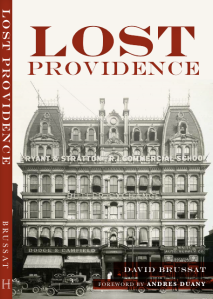
Ludwig Mies van der Rohe. (Werner Blaser/Mies van der Rohe Society)
Most people know that one of the three world-historical founders of modern architecture, Charles-Édouard Jeanneret-Gris, changed his name at age 33 to Le Corbusier (the crow). Not until I got to page 126 in James Stevens Curl’s Making Dystopia did I realize that the second of the three, Maria Ludwig Michael Mies, changed his name at age 25 to Ludwig Mies van der Rohe. He is known colloquially as just Mies, as if he were Elvis. Stevens Curl is the first and only scholar I’ve seen put an umlaut over the e in Miës. (The third major founding modernist was Walter Gropius, who, aside from neglecting a pair of middle names, left the name he was born with well enough alone.)
The professor milks the Mies for all it’s worth:
That transformation also involved a bit of self-invention, starting with the addition of an Umlaut, tréma, or diaeresis to the “e” of his surname. Mies has connotations in German with what is seedy, poor, rotten, lousy, wretched, bad, awful, crummy, and out of sorts. A Miesmacher is a defeatist, a grouser, a killjoy, an alarmist, and a Miesepeter is a misery-guts, though its cuddly, pussycat (which would be Miez, Mieze, or Miezekatze in German, with the “z” pronounced as “tz”), soothing sound in English appealed to Modernist enthusiasts when affectionately referring to the German architect. In 1921 Mies became Ludwig Miës van der Rohe (the pretentious van der sounds vaguely grand as well as reassuringly Dutch [von der would not have been possible because it was associated with ennoblement: also anything German, loosely connected with the old order, would not have gone down well at the time, so Dutch was safer. Besides, in Dutch, mies means “nasty, ugly, dismal, or vile,” so when the e is pronounced, a sound something like mee-ess results, which has no such associations in either Dutch or German]. Rohe [Mies’s mother’s maiden name], with suggestions of that which is crude, rough, raw, tough, unrefined, might suggest qualities more fashionable when the proletariat based in the admiration of avant-garde bourgeois opinion, but the word also can be connected with that which is unpleasant, indecent, vulgar, coarse, and brutish).
This amusing paragraph I have transcribed merely to give a taste of Stevens Curl’s ability to tease out the most plausible nuances of what most historians might consider essentially tedious items of biographical factuality.



The name is spelled wrong in this article. There should be an umlaut over the ‘e’-letter in ‘Mies’. Almost everybody is doing this erroneously. Stevens Curl is correct.
LikeLike
Gropius was the foundation director of Bauhaus. Then Ludwig Mies van der Rohe began at the Bauhaus to teach and the later became its director. Only Le Corbusier, the best role model for architects and students back then, did not teach at Bauhaus.
LikeLike